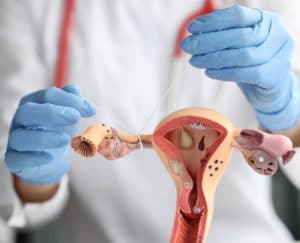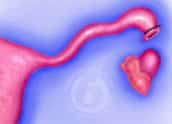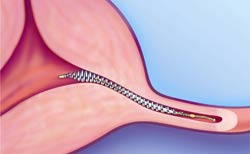Did you know that every year, about 700,000 women opt to have their tubes tied in tubal ligation procedures? While this is the right choice for many of these women, some women realize later that they do, in fact, want to have another baby. But is it possible to get pregnant after you’ve had a tubal ligation performed?
Your chances of a successful tubal ligation reversal will depend a lot on which tubal ligation method your surgeon used. Read on to learn more about the types of tubal ligation and how each one is reversed.
What Is Tubal Ligation?
Before we dive into all the different types of tubal ligation, let’s talk some about what the procedure is. Tubal ligation is a type of permanent birth control designed to block eggs from going down the fallopian tubes. Not only do they block eggs from going down the tubes, the tubal ligation blocks the sperm from coming up the tube to find the egg. These procedures are designed to be permanent, although some of them may be reversed. If the blockage is removed then sperm and more easily find and fertilize the egg…natural conception will be restored.
Each month when you ovulate, an egg travels from your ovaries down your fallopian tubes and into your uterus. If that egg collides with sperm, you can become pregnant. Tubal ligation stops that egg from making it to your uterus by causing permanent blockage…whether that be by cutting, burning, or otherwise obstructing the fallopian tubes.
Partial Salpingectomy

This option removes part (that is why is is called partial) of your fallopian tubes, leaving the ends to scar and heal off. The ends of the tubes may also be sewn shut or tied off, both to prevent bleeding and to prevent them from healing back together.
The most popular type of partial salpingectomy is the Pomeroy technique. During this procedure, your doctor will make a small loop in your fallopian tube and stitch it in place. Then they’ll cut off the top of the loop, remove it, and stitch the ends to prevent bleeding and to keep them from healing together again.
Bilateral Salpingectomy
A bilateral salpingectomy is similar to a partial salpingectomy in that it removes some of your fallopian tubes. The difference with this procedure is that a bilateral salpingectomy removes the entirety of your fallopian tubes. Your ovaries and uterus stay intact, however, unlike in a full or partial hysterectomy.
A bilateral salpingectomy can often be done as an outpatient, laparoscopic procedure. Given that you’re removing the entire fallopian tube, this method tends to be slightly more effective at preventing pregnancy. However, it is not one of the types of tubal ligation that can not be reversed since you have no fallopian tubes left to reattach.
The problem with the term bilateral salpingectomy is that most health care people do not always use the term correctly…the could mistakenly call your tubal ligation a bilateral salpingectomy but only removed part of the tube (reversible). They could also call the procedure a bilateral salpingectomy and removed the entire tube (not reversible).
The only way to tell for sure what was removed is to request a copy of your tubal ligation operative report…but also the pathology report. This report will say exactly what was removed during your tubal ligation procedure.
Fimbriectomy
A fimbriectomy is a more unusual form of tubal ligation that falls under the salpingectomy umbrella. Your fallopian tubes are connected to your ovaries by thin, finger-like structures called fimbriae.

After your surgeon removes the ends of your fallopian tubes, they may tie off or cauterize the remaining end to prevent bleeding. In the past, this procedure has been thought to be irreversible. As we’ll discuss more later, some new developments in microsurgery techniques may make fimbriectomy reversal possible.
Cauterization
Another popular method of tubal ligation involves cauterizing the ends of the fallopian tubes. For one thing, cauterizing these ends helps to prevent bleeding and may speed up the healing process. Cautery also creates scar tissue, which can help to block off the ends of the fallopian tubes and prevent pregnancy.
During a cauterization procedure, your surgeon will either cut your fallopian tubes in two or remove a small section of the tube. They’ll then pinch the ends of the tube with a pair of forceps that have an electric current running through them. This will kill the tissue at the ends of these tubes and create scar tissue that blocks off the tube.
Clips/Rings
For people who think they may want to have their tubal ligation reversed down the road, clips and rings are a very popular sterilization option. In these procedures, your doctor won’t cut or remove any of your fallopian tubes at all. Instead, they’ll clamp them shut with small metal or plastic clips or rings that keep eggs from passing through the tube.
Clip procedures use small metal or plastic clips that clamp down on the tube, cutting off the passage inside. The tissue around the clip will also get cut off from blood supply and so will eventually die and scar around the clip. Ring procedures use small silicone rings to cut off a loop of the tube, with the same effect.
Essure
Essure is a tubal sterilization procedure that’s no longer used in the United States. Essure was first approved in 2002, but Bayer stopped selling the device in the United States in 2018. Essure devices have reportedly caused pain, heavier periods, and even perforation, among other problems.

Unlike the other procedures we’ve mentioned here, Essure could be inserted during a normal doctor’s visit, rather than requiring surgery.
Essure can be reversed with a procedure called a tubouterine implantation procedure.
Is Reversal Possible?
Part of the idea of tubal ligation is to provide a permanent birth control method. And while most people never come to regret the decision to get a tubal ligation, some people do decide they want to get pregnant again after they get their tubes tied. So is reversal even possible, and can you get pregnant afterward?
In general, the question of whether your tubal ligation can be reversed depends on what type of procedure you had done. We’ll discuss what’s involved with reversing each procedure more in a moment. In general, tubal ligation reversal procedures have a success rate of between 50 and 80 percent.
When Reversal Is Most Likely to Succeed
There are a few factors that may make you more likely to have a successful tubal ligation reversal. For one thing, the younger you are, the more likely your body is to bounce back from a tubal ligation reversal. Success is also more likely the more recently you’ve had your tubal ligation – less scar tissue means more chance of healing.
Of course, part of the success equation will depend on your partner’s sperm count and motility. If there are other fertility problems for either of you, pregnancy may be less likely, regardless of whether or not you have a tubal reversal procedure done. And, as we’ll discuss more in a moment, success is most likely for people who had ring or clip ligation procedures.
Partial Salpingectomy Reversal
If you had a partial salpingectomy performed, your chances of a successful tubal reversal will depend a lot on how much of your fallopian tubes were removed. The more damage that was done to your fallopian tubes, the less likely you are to be able to get pregnant through natural means. But in most cases, successful tubal reversal is more than possible after a partial salpingectomy.
Depending on the state of your particular fallopian tubes, your doctor may be able to cut off the scarred ends of the fallopian tubes. From there, they can reattach the two ends and use microsurgery techniques to sew them together. In time, your fallopian tubes should heal back together, and natural pregnancy should become possible again.
Bilateral Salpingectomy Reversal
Bilateral salpingectomy is the only tubal ligation procedure we’ll discuss here that isn’t reversible. Since your fallopian tubes were removed entirely, there isn’t anything left to repair or attach. Unfortunately, getting pregnant through natural means will not be possible for you after this procedure.
However, you may be able to get pregnant through in vitro fertilization if your uterus and ovaries are still intact. You can also consider getting pregnant through a surrogate or adopting. Talk to your partner and your doctor to figure out which path to parenthood is right for you after a bilateral salpingectomy.
Fimbriectomy Reversal
We mentioned earlier that, in the past, fimbriectomy reversal was thought to be impossible. This procedure removes the connections to the ovary that are responsible for transferring the egg to the fallopian tube. Even if you were to reattach the tube to the ovary, the eggs may have no way to make it into the tube in the first place.
However, some recent advances in microsurgical techniques have made it possible to reverse fimbriectomies successfully. The inner lining of your fallopian tubes has the same structures that the fimbriae do. The end of the tube can be gently folded over the openings in the ovary, allowing for success rates of about 30 to 40 percent.
Cauterization Reversal
In general, the chances of successful cauterization reversal depend on the same sorts of factors as the partial salpingectomy reversal. As with the other procedure, your doctor will remove the cauterized ends of your fallopian tubes and get back to living, healthy tissue. They’ll then reconnect the two ends and allow them to heal back into one continuous tube.
The more recent your cauterization procedure was, the more likely you are to have a successful reversal procedure. In general, these tubal ligations tend to have a somewhat higher success rate than other methods. Since only the very ends of the tube are damaged, the procedure is usually simple to reverse.
Clip/Ring Reversal
Clip and ring tubal ligation reversals are among the easiest tubal ligation procedures to reverse, especially depending on when you got it done. If your tubal ligation was recent, your fallopian tubes may not have even died and developed scar tissue yet. Depending on the state of your tubes, your surgeon may be able to just remove the ring or clip and let your tubes return to normal.
If it’s been a while since your tubal ligation, reversal should still be relatively straightforward. Your doctor will remove the section of the tubes that has scar tissue and leave clean, healthy ends. From there, they’ll reconnect them as with the other procedures we’ve discussed here and let the ends heal back together.
Essure Reversal
Some patients choose to get Essure reversed as a result of the health complications they experienced because of the device. It’s important to note that the FDA says that if you aren’t experiencing problems with your Essure implant, you can continue to safely use it as birth control. However, it is also possible to reverse Essure entirely and get pregnant through natural means.
In almost all cases, Essure reversal will involve removing the section of the fallopian tube that contains the device. Your doctor will also remove any surrounding scar tissue to get back to healthy, open ends of your fallopian tubes. They’ll reattach them to your uterus, creating a solid, unobstructed pathway for the egg once more.
Learn More About the Types of Tubal Ligation

Depending on the method you opt for, you may be able to get your procedure reversed and get pregnant through natural means. If you think you’d like to get your tubal ligation reversed, talk to your doctor as soon as possible; the sooner you act, the better your chances of success.
If you’d like to learn more about the types of tubal ligation, check out the rest of our tubal reversal website: A Personal Choice
We’ve been performing tubal ligation reversals since 1997 and have pioneered innovative techniques in microsurgical tubal reversal surgery. Contact us today and start working with the world’s leading tubal reversal doctor.










